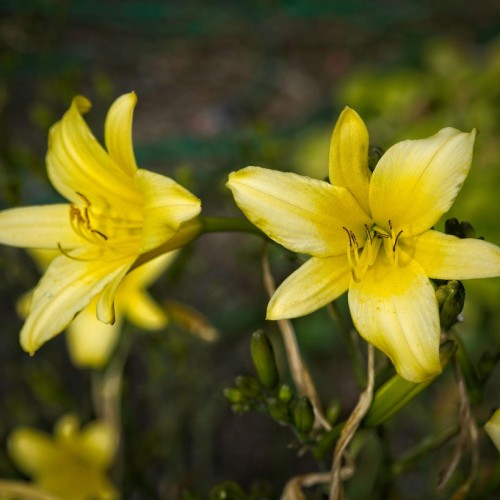
daylily
Hemerocallis 'Lady Florence'
Cycle:
Herbaceous Perennial
Watering:
Average
Hardiness Zone:
4 - 9
Flowers:
Flowers
Sun:
Full sun,part shade
Leaf:
Yes
Growth Rate:
Low
Maintenance:
Low
Drought Tolerant:
Yes
Salt Tolerant:
Yes
Care Level:
Moderate
watering
Daylilies (Hemerocallis 'Lady Florence') prefer moist, well-drained soil and plenty of sunshine. During the growing season (early spring through late summer), water daylilies deeply and regularly, about once a week, making sure that the soil is kept evenly moist. Water at the base of the plant, avoiding wetting the foliage. To avoid root rot in periods of excessive heat, check the soil's moisture level more often and water when necessary. During periods of high rainfall or when temperatures are cooler, watering can be reduced. In winter, daylilies should be watered only occasionally.
sunlight
The daylily (Hemerocallis 'Lady Florence') is a popular flowering plant that requires an abundance of sunlight in order to thrive. This plant species prefers at least 6 hours of full sun each day, ideally in a location that provides direct sunlight for at least the majority of the day. However, it is important to note that it should not be exposed to full sunlight during the hottest hours of the day, as this can cause the plant to become stressed and may even result in wilting or scorching. Daylilies are also able to tolerate some brief periods of partial shade throughout the day. In situations where full sun is not available, the plant is capable of adapting to some degree of shade without compromising its overall health and flowering performance. Ideally, the plant should receive as much direct sunlight as possible, especially during the morning and early afternoon hours, and should be shielded from direct sunlight during the late afternoon and early evenings.
pruning
When pruning daylilies (Hemerocallis 'Lady Florence'), it is best to do so after the flowers have finished blooming in late summer or early fall. The ideal time to prune is generally 3-4 weeks after bloom. Generally, this type of daylily prefers to remain relatively compact. As such, it will need to be pruned aggressively each year. When pruning, remove the flower stalks at the base each season.Donlt leave any stalks on the plant for more than 1 season or the daylily will become overcrowded and likely won't flower as well. When pruning, it is also a good idea to lightly trim or thin any overly thick foliage. You should strive to cut back the foliage by about 1/3. This will help increase airflow, decrease fungal diseases and help the daylily focus more of its energy on flowering rather than foliage production.
